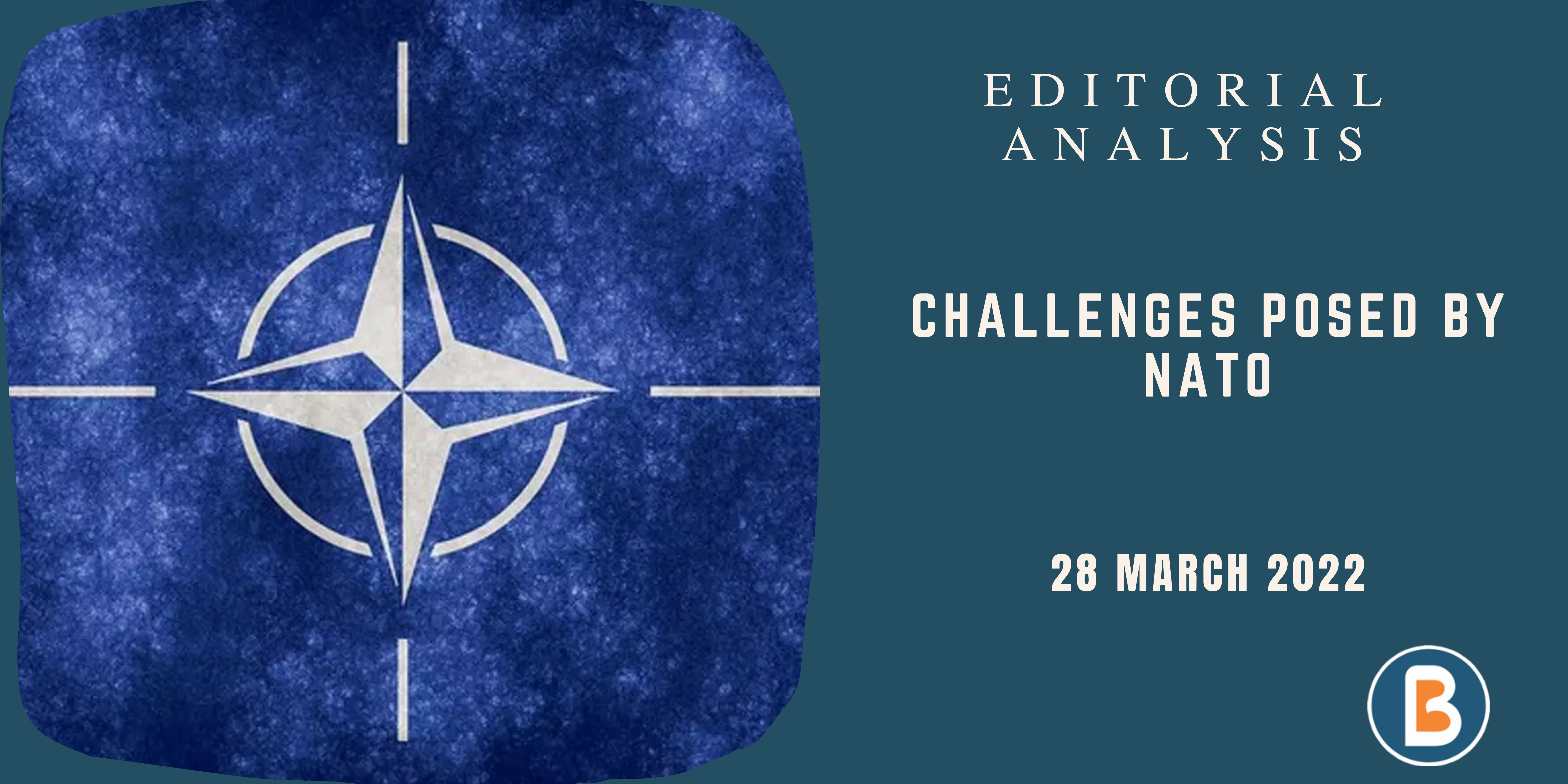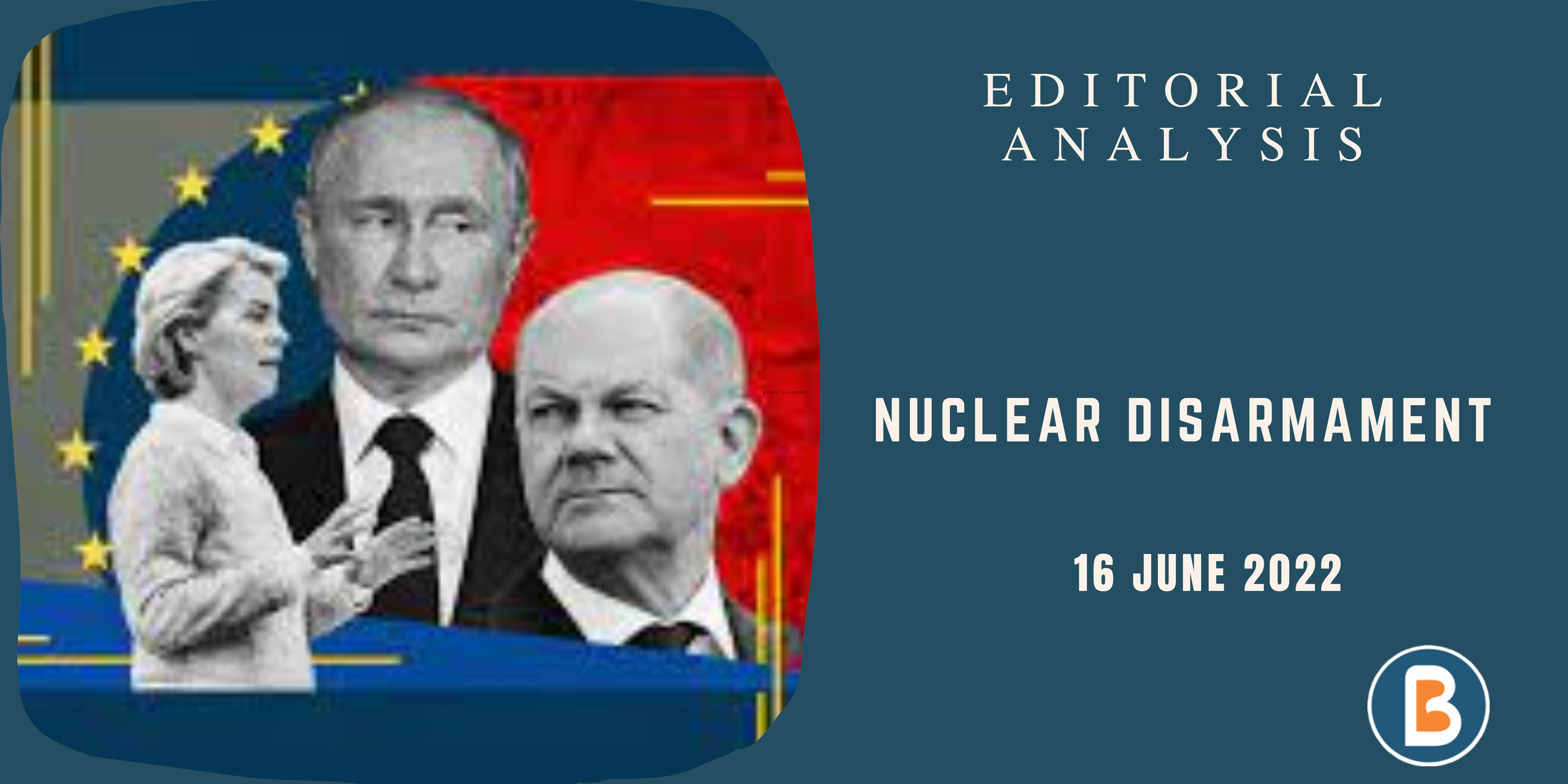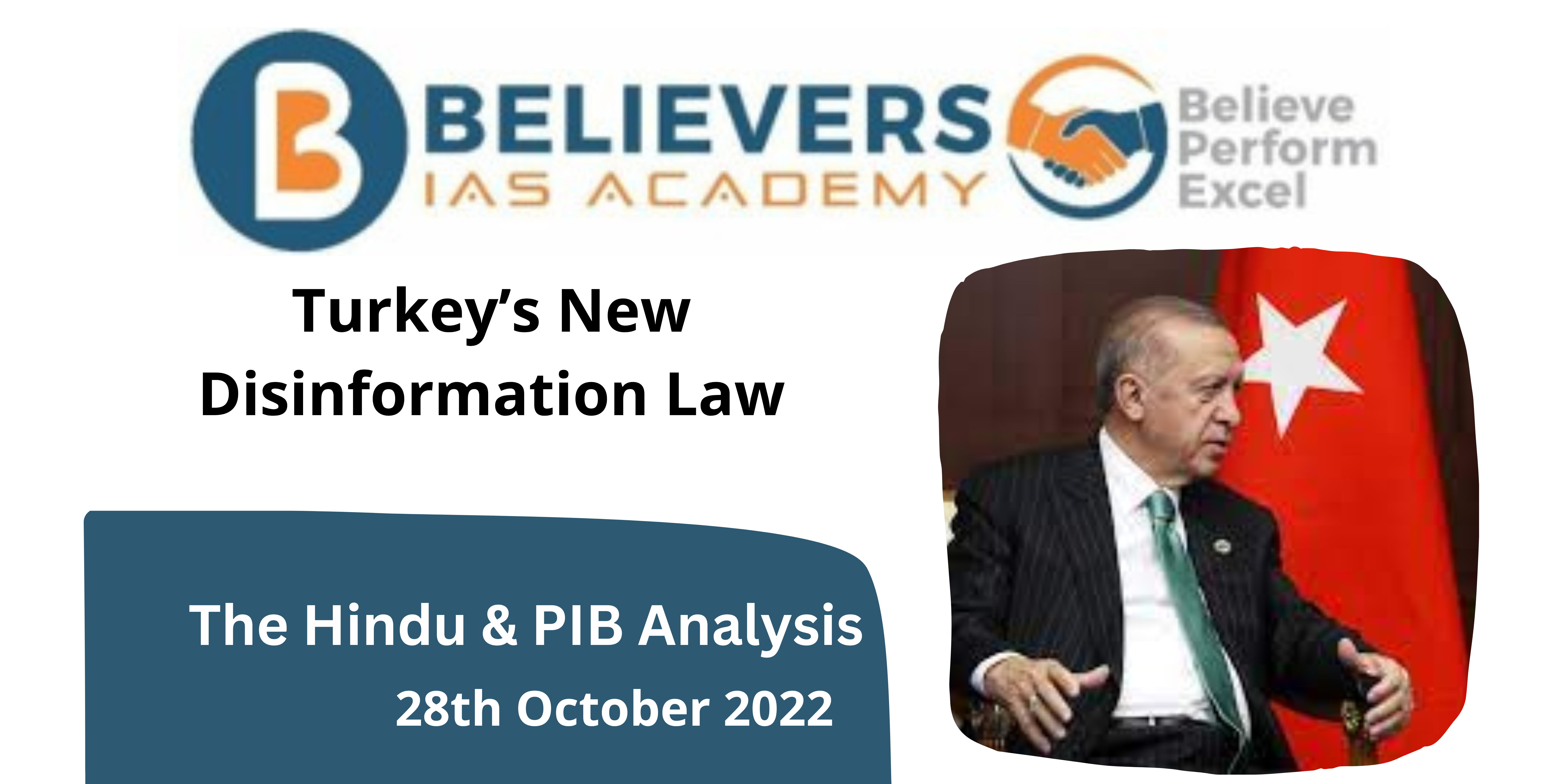Challenges posed by NATO
Context:
- Understanding the history of NATO’s challenge to the security posture of Russia would help identify the roots of the ongoing conflict.
- It might also provide a clearer picture of what institutional arrangements and assurances the Kremlin could accept as sufficient to pull back its troops and weaponry and engage in dialogue with the administration of Ukraine.
Background:
- The North Atlantic Treaty Organization (NATO, also called the North Atlantic Alliance, is an intergovernmental military alliance among 28 European countries and 2 North American countries.
- Established in the aftermath of WW-II the organization implements the North Atlantic Treaty , signed 4 April 1949.
- The self-declared mission of NATO when it emerged on April 4, 1949, had three prongs: “deterring Soviet expansionism, forbidding the revival of nationalist militarism in Europe through a strong North American presence on the continent, and encouraging European political integration.”
Cold War:
- A time when the Cold War was gaining momentum, the Soviet Union signed up socialist republics of Central and Eastern Europe to the Warsaw Pact, including Albania (which withdrew in 1968), Bulgaria, Czechoslovakia, East Germany, Hungary, Poland, and Romania.
- The Pact, essentially a political-military alliance, was viewed as a direct strategic counterweight to NATO, and its focus at the time was the fact that while East Germany was still part of the Soviet occupied-territory of Germany, the Federal Republic of Germany had joined NATO by May 1955, and Moscow began to worry about the consequences of a strengthened and rearmed West Germany at its border.
- As a unified, multilateral, political and military alliance, the Warsaw Pact was aimed at tying Eastern European capitals more closely to Moscow, which it effectively did for several decades through the worst hostilities of the Cold War.
- Indeed, the Pact even gave the Soviet Union the option to contain civil uprisings and dissent across the European satellite states, including in Hungary in 1956, Czechoslovakia in 1968, and Poland in 1980-1981.
Expansions carried out by NATO:
- During the term in office of U.S. President Bill Clinton, NATO began, in successive rounds of negotiation and expansion, to pull former Warsaw Pact states into its membership.
- After reunification, while Germany retained membership of NATO, the Czech Republic, Hungary, and Poland joined the alliance in 1999. But it did not end there — in 2004, Bulgaria, Estonia, Latvia, Lithuania, Romania, Slovakia, Slovenia joined the treaty organisation.
- In 2009 Albania and Croatia signed on, in 2017 Montenegro entered the bloc and in 2020 it was North Macedonia’s turn.
Russia’s Response:
- In 2008, following NATO announcement of its intent to admit Georgia and Ukraine into its alliance, Russia invaded Georgia and took control of several of its territorial regions; and in 2014, with Ukraine drifting closer towards an economic alliance with the European Union, Russia marched into Ukraine and seized Crimea.
Source: THE HINDU.




